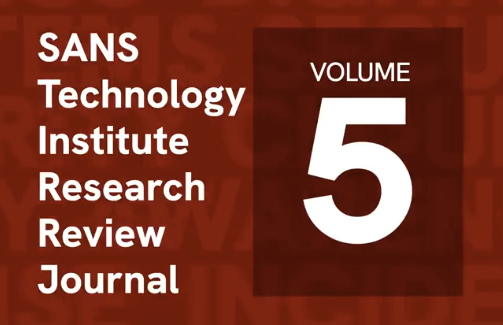Handler on Duty: Jan Kopriva
Threat Level: green
Podcast Detail
SANS Stormcast Wednesday Mar 19th 2025: Python DLL Side Loading; Tomcast RCE Correction; SAML Roulette; Windows Shortcut 0-Day
If you are not able to play the podcast using the player below: Use this direct link to the audio file: https://traffic.libsyn.com/securitypodcast/9370.mp3

Python DLL Side Loading; Tomcast RCE Correction; SAML Roulette; Windows Shortcut 0-Day
00:00
My Next Class
| Application Security: Securing Web Apps, APIs, and Microservices | Dallas | Dec 1st - Dec 6th 2025 |
| Network Monitoring and Threat Detection In-Depth | Online | Central European Time | Dec 15th - Dec 20th 2025 |
Python Bot Delivered Through DLL Side-Loading
A "normal", but vulnerable to DLL side-loading PDF reader may be used to launch additional exploit code
https://isc.sans.edu/diary/Python%20Bot%20Delivered%20Through%20DLL%20Side-Loading/31778
Tomcat RCE Correction
To exploit the Tomcat RCE I mentioned yesterday, two non-default configuration options must be selected by the victim.
https://x.com/dkx02668274/status/1901893656316969308
SAML Roulette: The Hacker Always Wins
This Portswigger blog explains in detail how to exploit the ruby-saml vulnerablity against GitLab.
https://portswigger.net/research/saml-roulette-the-hacker-always-wins
Windows Shortcut Zero Day Exploit
Attackers are currently taking advantage of an unpatched vulnerability in how Windows displays Shortcut (.lnk file) details. Trendmicro explains how the attack works and provides PoC code. Microsoft is not planning to fix this issue
https://www.trendmicro.com/en_us/research/25/c/windows-shortcut-zero-day-exploit.html
Discussion
New Discussions closed for all Podcasts older than two(2) weeks
Please send your comments to our Contact Form
| Application Security: Securing Web Apps, APIs, and Microservices | Dallas | Dec 1st - Dec 6th 2025 |
| Network Monitoring and Threat Detection In-Depth | Online | Central European Time | Dec 15th - Dec 20th 2025 |
| Application Security: Securing Web Apps, APIs, and Microservices | Orlando | Mar 29th - Apr 3rd 2026 |
| Network Monitoring and Threat Detection In-Depth | Amsterdam | Apr 20th - Apr 25th 2026 |
| Application Security: Securing Web Apps, APIs, and Microservices | San Diego | May 11th - May 16th 2026 |
| Network Monitoring and Threat Detection In-Depth | Online | Arabian Standard Time | Jun 20th - Jun 25th 2026 |
| Network Monitoring and Threat Detection In-Depth | Riyadh | Jun 20th - Jun 25th 2026 |
| Application Security: Securing Web Apps, APIs, and Microservices | Washington | Jul 13th - Jul 18th 2026 |
Podcast Transcript
Hello and welcome to the Wednesday, March 19th, 2025 edition of The Sands and it's Storm Center's Stormcast. My name is Johannes Ulrich and today I'm recording from Jacksonville, Florida. Xavier came across an interesting piece of malware that he's sharing in today's diary. The malware itself arrives as a zip archive, nothing really that special about it. It's called hootsuite.zip. Hootsuite, I'm not sure if they're still around. It was sort of a front end for Twitter. They had some issues when their API pricing changed. But either way, it's probably a well enough known company where some people may open that zip file. Also, the zip file itself, at least at first, doesn't appear to include anything malicious. There is a legitimate PDF reader. There is a PDF. Now, where it gets interesting is once you are starting the PDF reader, The reason the attacker is sending you that PDF reader is because this PDF reader is vulnerable to DLL side loading. If it loads a DLL file, a library, it will prefer the file in the local directory over the one in the system directory. And with that, it's easy to replace a system library with a malicious one. That's exactly what's happening here. This then invokes a bad file. That bad file will install a complete Python environment because, you know, who needs to save bandwidth these days? So, complete Python environment is being installed. And then a malicious Python script is being executed. Don't ask me why they don't just do PowerShell because PowerShell is maybe too messy for them. But so is Python. I would have installed Perl just for good old times sake. But anyway, the PDF reader is also much larger than the original. But there doesn't appear to be any additional malicious functionality here. Looks like they're just added additional sort of garbage at the end here to push it beyond 100 megabytes in size, which will then prevent some anti-malware solutions from scanning it. And one listener reached out over X to point out a little omission in the Wall Alarm blog post about the Tomcat vulnerability I talked about yesterday. I mentioned, and that's from the Wall Alarm blog post, that in order to be vulnerable, you need to use a file-based session manager. But in addition, as DKX here points out, you also need to configure the default servlet to be writable. Neither one of these two configurations is a default configuration. So someone would have to specifically configure Tomcat with these two options to be vulnerable. I have no idea how popular or common these particular configurations are. And Portsmaker did release a detailed blog post showing how to exploit the recent Ruby SAML vulnerability against GitLab. I think that's an important blog post. It does fill in some of the holes left in the original announcement. The problem with these SAML vulnerabilities is that they're fairly abstract and the risk isn't always easy to gauge of the export actually being used and being used against your particular site or your particular application. I think a blog post like this actually walking you through the exploit development and how it works in a specific case like GitLab here certainly brings home the message that these are real vulnerabilities that are actually exploitable. And Trend Micro's third initiative published a blog post with details regarding a Windows shortcut exploit that's already being abused in numerous advanced persistent threat campaigns. Actually, the blog post goes over some of the APT campaigns that have taken advantage of this particular vulnerability. However, Microsoft at this point has no plans to actually fix it. And the reason is that, well, the nature of this vulnerability is a little bit tricky. So the problem here are the good old shortcut files, the .LNK or link files that are typically supposed to be used to basically just provide a convenience link to a particular piece of software. However, as part of the .LNK file, an attacker can add arguments to the command they link to. And these arguments then, if you're creating your links right, will be able to execute arbitrary code. Now, a user may inspect the .LNK file. Just right-click on it and you can see the content on it. And you should see these command line arguments. So the user should have a chance, even though I consider it a small chance, of actually discovering the malicious exploit. That's sort of where the actual nature of the vulnerability comes in. By using, well, interesting combinations of white space characters, it's possible for an attacker to sufficiently obscure the actual command line arguments. And basically push them off the screen so a victim wouldn't actually see anything wrong when they're inspecting this file. In the end, it comes down to, in my opinion, that it's a user downloading and executing a piece of software that, well, they basically received from an unverified source. Not really all that different from just downloading and executing a .exe file. Not sure how much the file being a link file contributes the likelihood of the exploit actually working. And I think that's a little bit here what Microsoft is thinking about. I don't know. It's probably also a hard one to fix for Microsoft compared sort of to the impact it may have for the security of the overall systems. It shouldn't be too difficult for anti -malware and such to basically check whether or not link files are using any of these specific characters. And, yeah, the other problem still remains where a user may just download and click and execute a link file without first checking the parameters. And then, of course, that particular vulnerability wouldn't really matter. Well, and this is it for today. So, thanks for listening and hope you like it. If you like it, please leave a good review at your favorite podcast site if it allows for reviews or click the five-star, whatever it is, link. So, thanks and talk to you again tomorrow. Bye.










